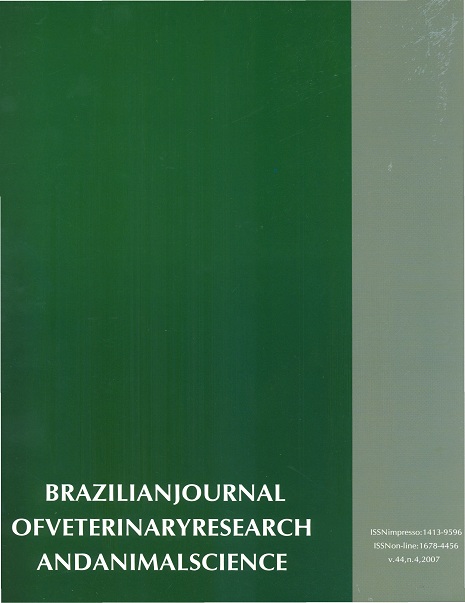The nervous territories of the brachial plexus in Chinchilla lanigera
DOI:
https://doi.org/10.11606/issn.1678-4456.bjvras.2007.26629Keywords:
Innervation, Brachial plexus, Chinchilla, AnatomyAbstract
For the study concerning the Brachial Plexus (BP) and nervous territories of chinchillas (Chinchilla lanigera) 10 animals were used. After the removal of the skin, the indetification of the thoracic limb, pectoral area and thoracic and abdominal walls was made. Then, compresses of glacial acetic acid at 3% were applied to these areas, in order to improve the observation of the nerves. In the studied animals, the emergence of the BP was observed to be from the sixth cervical nerve to the first thoracic nerve. These four roots make the trunks of the nerves whose ventral branches constitute their arrange and territorial distribution. From these four trunks arise the 12 nerves that constitute the BP. These nerves may be formed by a single medullary segment - monosegmentar (suprascapular, cranial pectoral, thoracodorsal), or by two ou more segments, plurisegmentar (subscapular, axillary, musculocutaneous, lateral thoracic, caudal pectoral, long thoracic, median, ulnar and radial). Therefore, constancy in origin, muscle, joint and bone innervation was observed, and can confirm the existence of a clearly defined pattern of the delimitation of nervous territories.Downloads
Download data is not yet available.
Downloads
Published
2007-08-01
Issue
Section
UNDEFINIED
License
The journal content is authorized under the Creative Commons BY-NC-SA license (summary of the license: https://
How to Cite
1.
Gamba C de O, Castro TF de, Rickes EM, Pereira MAM. The nervous territories of the brachial plexus in Chinchilla lanigera. Braz. J. Vet. Res. Anim. Sci. [Internet]. 2007 Aug. 1 [cited 2024 Apr. 16];44(4):283-9. Available from: https://revistas.usp.br/bjvras/article/view/26629





